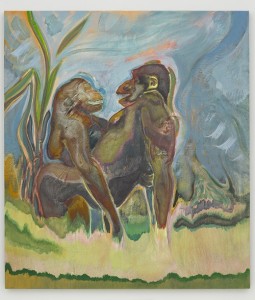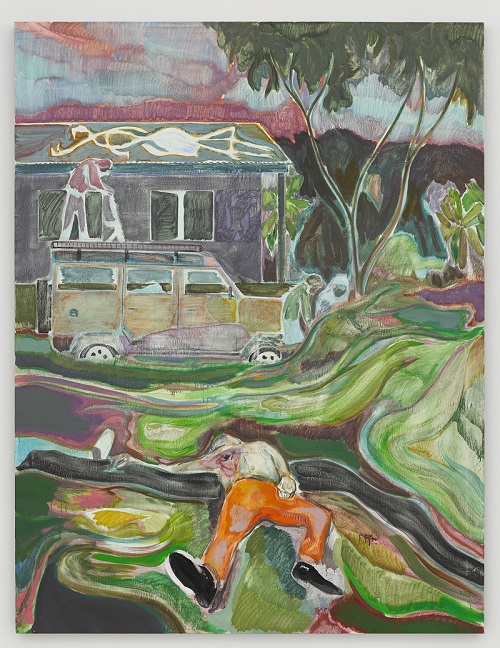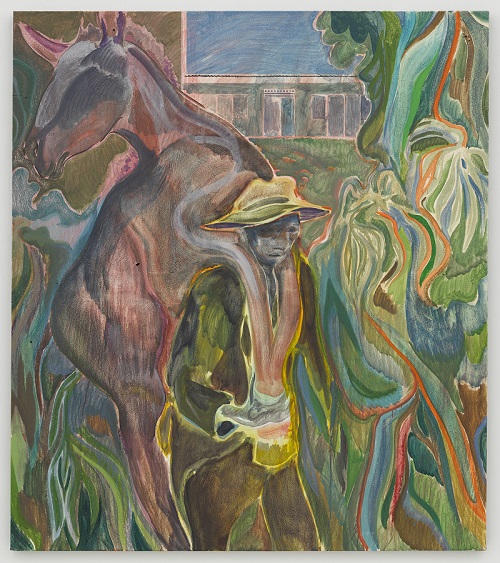
Michael Armitage, Nairobi-London
Lucy, 2015.
“I’d never claim to be an activist for any issue,” he says. “It’s very important to me in developing my practice that my works are relevant in the cultural space, and I try to find a way for the paintings to have a place within society at home. I am not a politically motivated artist but my paintings consider different social and cultural issues that I come across: They’re questions I ask myself, questions I pose to culture at home and to the viewer.”(text ArtsyNet, 2016)
(left)Kampala Suburb, 2015.
(right)Magroves Dip, 2015.
About:
Michael Armitage’s paintings weave multiple narratives that are drawn from historical and current news media, internet gossip, and his own ongoing recollections of Kenya, his country of birth.
Living and working between London and Nairobi, Armitage paints with oil on Lubugo, a traditional bark cloth from Uganda, which is beaten over a period of days creating a natural material which when stretched taut has occasional holes and coarse indents. As noted by the artist, the use of Lubugo is at once an attempt to locate and destabilise the subject of his paintings.
The Garden, 2015.
Applying the paint in layers, Armitage scrapes, revises and repaints his compositions. The visual iconography of East Africa lies at the heart of his practice: its urban and rural landscape, colonial and modern vernacular architecture, advertising hoardings, lush vegetation and varied animal life. Undermining this rich colour palette and dream-like imagery, however, is a quiet exposition of Kenya’s sometimes harsh reality: its politics, social inequalities, violence and extreme disparities in wealth. In turn, Armitage reflects on the more absurd aspects of the everyday, commenting on both society and the surrounding natural environment – evoked with a lyrical and phantasmagorical vision.
Kariakor, 2015.
Armitage claims that ‘Painting is a way of thinking through something, trying to understand an experience or an event a little better and trying to communicate something of the problem to others’. In the painting Hornbill (21st – 24th September 2013) (2014), Armitage depicts one of the four terrorists who carried out the Westgate Shopping Mall attack, in which 67 people were killed including a group of children who were filming a cookery programme in the mall at the time. Armitage makes reference to this loss, by implanting the symbol of the Hornbill bird repeatedly across a tiled wall to the foreground of this armed figure; as according to West African myth Hornbills bury their dead in the beak of their bill.Accident (2014) looks back on a scene of personal trauma for the artist: a plane crash he experienced as a teenager, with his father and uncle, deep in the Kenyan bush – while ‘And so it is’ (2015) explores the all too familiar media image of political manipulation, where a shadowy figure gives an address behind a pair of microphones to an audience.(text White Cube, 2015)



